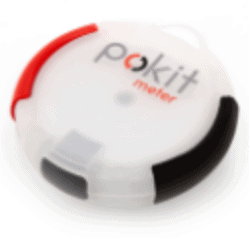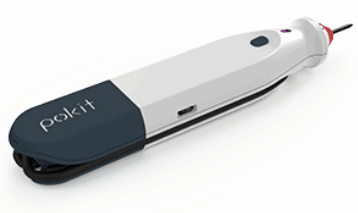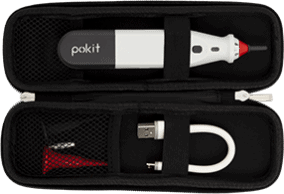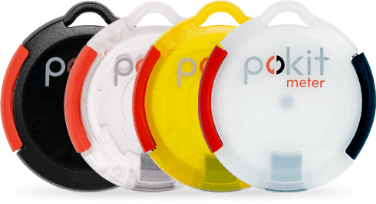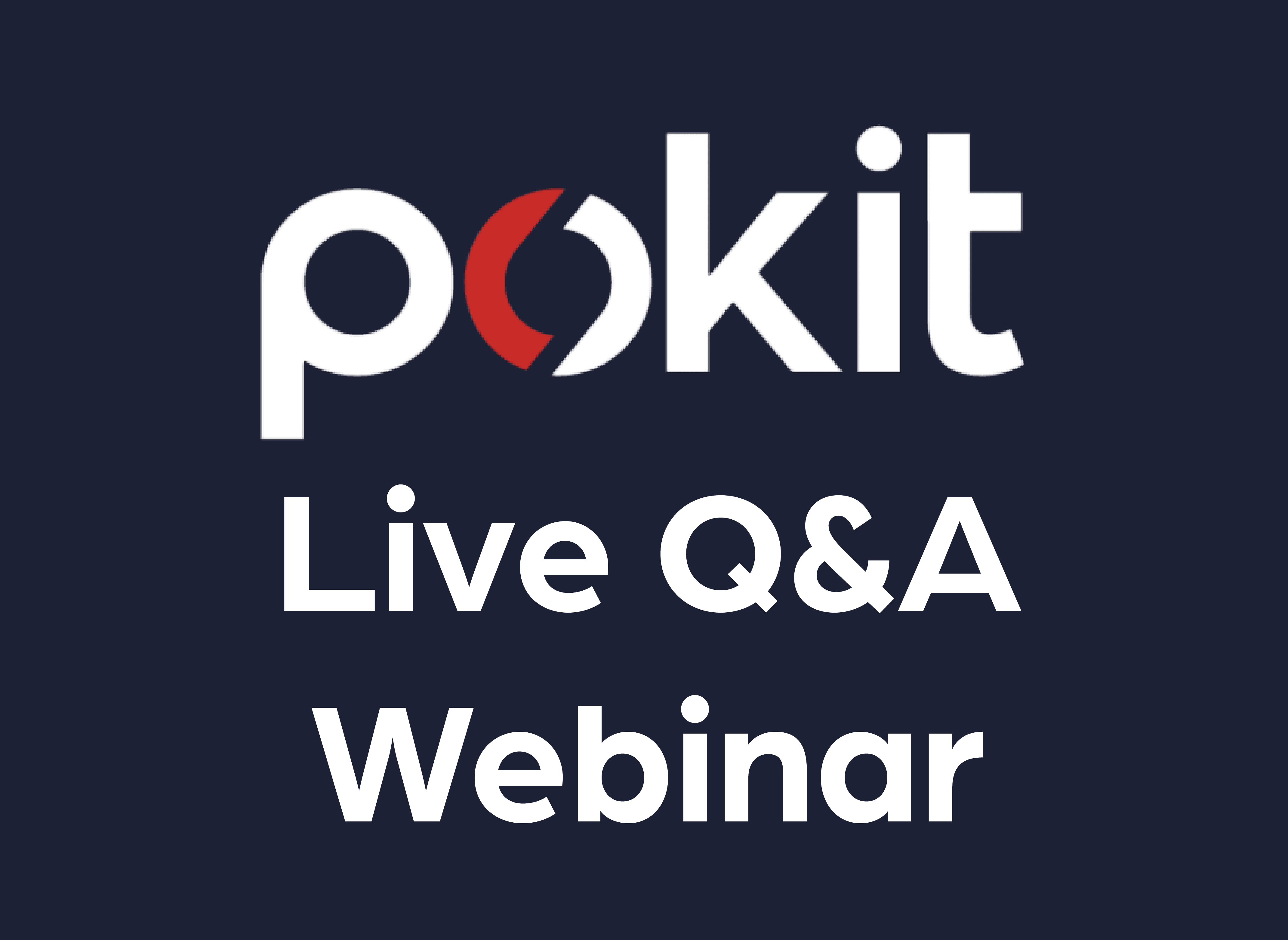On February 3 2022, we held our very first live Q&A webinar! We answered a number of common questions from the Pokit community during the live stream, but couldn’t make it to all questions on the day. You can find the answers to these questions below! If you missed the live stream, be sure to have a watch to find out more about Pokit as a company and our future: YouTube – Pokit Live Q&A Webinar
Why has Pokit Pro taken so long to develop?
We’ve gotten a new appreciation for how hard it is to develop a product like the Pokit Pro to a standard that is acceptable and of good quality. When we first developed the Kickstarter prototype, Pokit Pro it was a 300V 5A CAT II design. Listening to feedback from our early backers we decided to change it to a 600V 10A CAT III design, this made all of the challenges in making it significantly harder. For example, with CAT III 600V 12.5mm of clearance is required between internal and external components but the whole body is only 24mm wide so we had to develop a lot of ways of finding space while maintaining the required clearances between the different parts of the circuits and the circuits and the user.
Another issue was just dissipating the heat from the fuse. We had to develop a special plastic that could handle the heat that hasn’t been used before in this kind of product. We worked closely with material manufacturers to develop the plastic used. Pokit Pro’s challenges would have been significantly easier to overcome if we made it larger but we committed to keeping it as small as possible. Finally, on top of all the product design issues, we had to develop a production process to actually be able to deliver a product in this size.
What was the most difficult part of the design process?
The most difficult part of the design process was complying with the IEC61010 standards. One of the hardest parts was trying to find an expert in this field to help make sure we were interpreting the standards correctly. Unfortunately, as it turns out this kind of standards expert is very hard to find as multimeter design is a very niche subject.
In the end, we were forced to just figure it out ourselves, which is good because we are now experts in this field. It is a quite difficult standard to wrap your head around because it’s not just for handheld Multimeters, but any test and measurement equipment, so it was a significant challenge just to determine which parts of the standard apply to our product. Moreover, even once that is understood, there are multiple different ways laid out in the standard for making a safety compliant product, determining which one was the best for our product and understanding all the complexities of that approach was also a significant challenge.
What’s the difference between Pokit Meter and Pokit Pro?
Pokit Meter is the most compact multimeter we thought we could make that would fit on a keychain. With Pokit Pro, we set out to make a rechargeable high voltage, high current version based on the same basic framework. We knew it couldn’t be as small as Pokit Meter, but we could make it portable and powerful.
What is Pokit Pro’s bandwidth?
The typical analog bandwidth of an oscilloscope is normally about 10 times less than the sample rate. Using this same rule of thumb, the Pokit Pro could be said to have an analogue bandwidth of 100kHz. However, we’ve found that you can measure signals of 200kHz or even 300kHz so long as you’re ok with a bit of jagged lines and a slightly degraded signal.
Why can’t you revert to a previous firmware?
There are many reasons, the most important for Pokit Pro is safety because we have to meet a higher requirement for security and safety. So if there is a safety-related fix in an update, we don’t want users to be able to undo it. Another reason is for the app its easier for the app developers to only support one version, it allows them to spend all of their effort focusing on adding new features and fixing known issues without having to worry about compatibility with previous firmware versions. This issue is especially poignant when you have 4 Pokit Pro’s all measuring in sync. If there are differences between the way they measure or the way the data is transmitted or formatted to the app then the app will have to handle all of these different Pokit Pro versions and sync the data together which will be a very difficult challenge for the app team.
How can I update my address for my Pokit Pro pre-order?
For those of you who ordered through Kickstarter or the Pokit Innovations website, please contact us at support@pokitmeter.com and send through your new address and we would be able to update that for you. For people who ordered through IndieGoGo, you should be able to log in to your IndieGoGo profile and update your address yourself. If you have moved country, please send through your new address to us at support@pokitmeter.com as you cannot select a different country on IndieGoGo.
Why don’t Pokit Meter or Pokit Pro not have an on/off switch?
When we were developing Pokit Meter, we did not have enough room to integrate a switch into the design. Also, with Pokit Meter all of the electronics spin to accommodate the retractable leads which also makes integrating a button quite difficult. With Pokit Pro the device goes to sleep after a couple of days and uses very little power while asleep, pressing the button wakes it back up, and it is also rechargeable.
Why does Pokit Pro have a selector switch?
A typical handheld multimeter has several different ports for different circuits like Volts, Low Current and High Current, we could not fit all these different ports into Pokit Pro, so we used a switch instead. For Pokit Meter we were able to use transistors to do the switching instead because it was a low enough voltage and current that transistors could be used.
Will you be adding smaller logging intervals to the Pokit app?
For now, we aren’t adding smaller logging intervals. This is because the logging mode actually uses the multimeter modes and then logs the result. For DC, a capture of 200ms is taken and then averaged and for AC, a 200ms capture is used and an RMS is applied to get the value. When you consider processing time and sending the data over Bluetooth for live updates it ends up being about 250ms-300ms max speed.
When is the smartwatch app planned to be released?
The smartwatch app is currently in development. We have been and still are to a certain extent focused on the main Apps, but once we have full confidence in those, we will give a firmer date for the smartwatch app.
Why is Pokit doing a raise?
We are raising capital to really accelerate our growth, bring the company to the next level and meet the demand we are experiencing. We have started delivering Pokit Pro and we’ve gotten to a level of confidence where we know we can continue to grow from here – the company is now in a position to really accelerate. We’ve solved all of our big problems with Pokit Pro, so we’re ready to push forward onto our next product and future growth. We have opened the investment opportunity for all backers, although it should be noted that we are a private Australian company so we are using a local investment service which falls under the local securities body ASIC anyone can take part in the raise even internationally, but you will need to follow the rules in your own country.
When will Pokit be available for purchase?
We have 18000 units in production, and we’re hoping to have these produced by April/May. Once the 18k order is produced, we plan to do further production runs so that we have Pokit Pro’s in stock for purchase on our website and through our distributors hopefully around June. There are some risks with the future production runs (after the 18k) due to global chip shortages, but we are working to resolve those issues so we can have units in stock as soon as possible.
Can I send data directly to an Arduino powered display, or is the app always required?
At the moment, no. We are going to focus on the smartphone and smartwatch apps for now but we have received requests for things like this from customers and even enterprises and we do have it in our pipeline to add in the future.
What has been the biggest struggle since you started shipping the pro devices?
The biggest struggle has been getting a reasonable production yield so we can scale up production. The issues stem from the device being as small as it is and how it needs to be ultrasonically welded.
Will IndieGoGo get a shipping notification?
Yes. IndieGoGo backers will be you will receive a shipping notification once their order has been fulfilled.
Do you also plan on doing an API to implement it in own projects in the future?
The difficulty with doing this with Pokit Pro is that it’s a high voltage product so we have concerns over safety. There are parts of the IEC 61010 standard that express requirements for how accurately voltages are displayed. We are looking at ways we could integrate something like an API in some way in the future but at the moment the answer is unfortunately no.
Would it be possible to add frequency measurement to the multimeter functions?
Yes, this is one of the things we have discussed adding internally at Pokit Innovations. Look out for this in a future update.
Does the Pokit Pro appear as a USB drive when connected to a PC?
No, the USB is for power only because it is very difficult to achieve the required isolation on USB data lines.
Can you add calibration to different units in logger mode or Oscilloscope mode. By this I mean when reading a sound meter output can I have a conversion to db’s if I know the conversion/volt?
This is a very interesting suggestion and we will consider it. If there is a way it can be cleanly added to the app then we may add this.
Can Total Harmonic Distortion (THD) measurement be an added feature?
Yes, we plan to add more features such as THD, Signal Generator, wire finder/tracer Wattmeter (with 2 Pokits), Power Factor, Power Quality, and 3 phase equivalents and many more. Some or all of these advanced future features may be added as SAAS modules.

